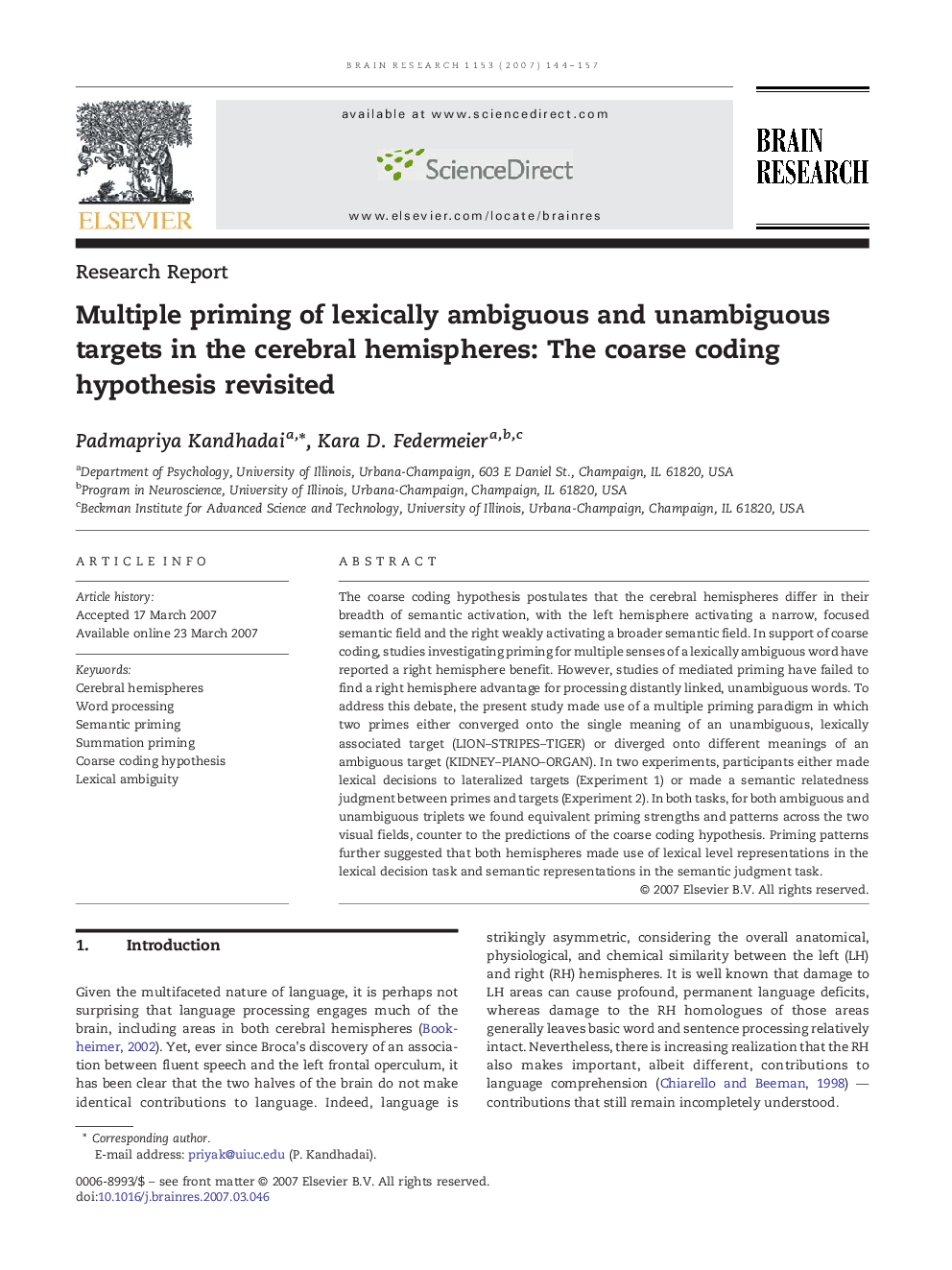| Article ID | Journal | Published Year | Pages | File Type |
|---|---|---|---|---|
| 4331088 | Brain Research | 2007 | 14 Pages |
Abstract
The coarse coding hypothesis postulates that the cerebral hemispheres differ in their breadth of semantic activation, with the left hemisphere activating a narrow, focused semantic field and the right weakly activating a broader semantic field. In support of coarse coding, studies investigating priming for multiple senses of a lexically ambiguous word have reported a right hemisphere benefit. However, studies of mediated priming have failed to find a right hemisphere advantage for processing distantly linked, unambiguous words. To address this debate, the present study made use of a multiple priming paradigm in which two primes either converged onto the single meaning of an unambiguous, lexically associated target (LION-STRIPES-TIGER) or diverged onto different meanings of an ambiguous target (KIDNEY-PIANO-ORGAN). In two experiments, participants either made lexical decisions to lateralized targets (Experiment 1) or made a semantic relatedness judgment between primes and targets (Experiment 2). In both tasks, for both ambiguous and unambiguous triplets we found equivalent priming strengths and patterns across the two visual fields, counter to the predictions of the coarse coding hypothesis. Priming patterns further suggested that both hemispheres made use of lexical level representations in the lexical decision task and semantic representations in the semantic judgment task.
Related Topics
Life Sciences
Neuroscience
Neuroscience (General)
Authors
Padmapriya Kandhadai, Kara D. Federmeier,
